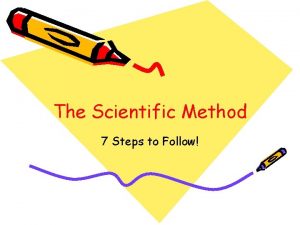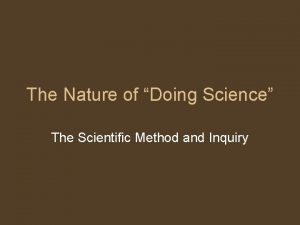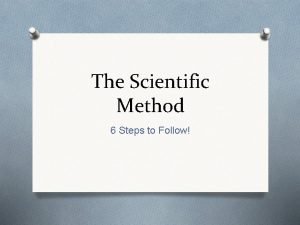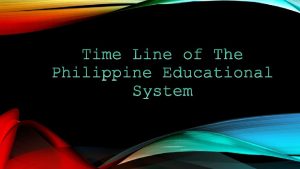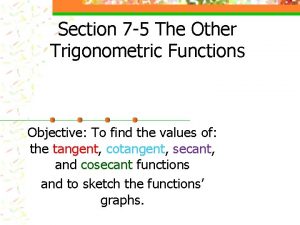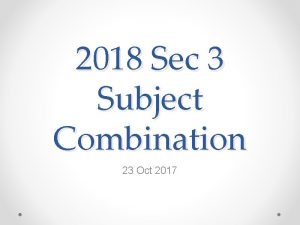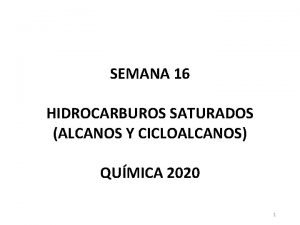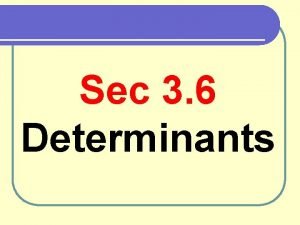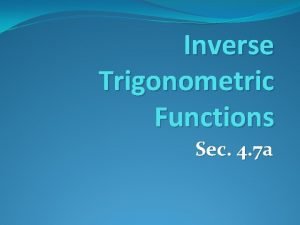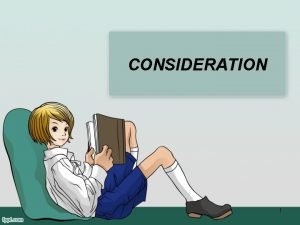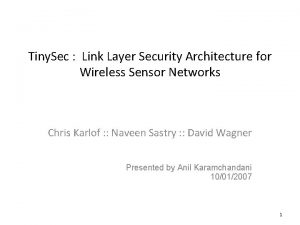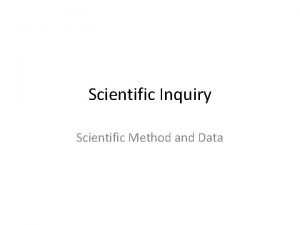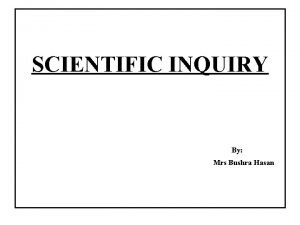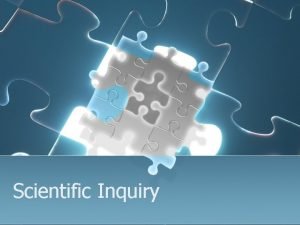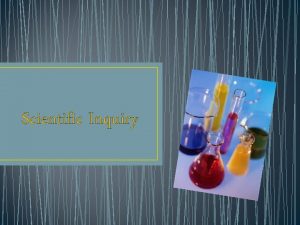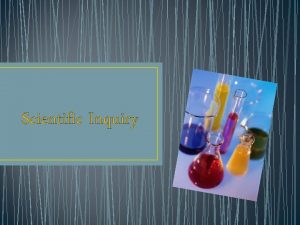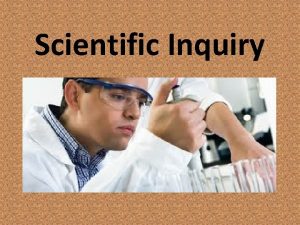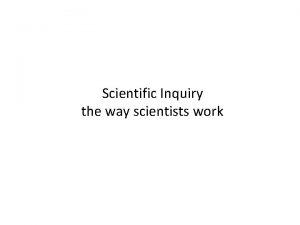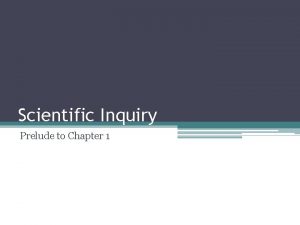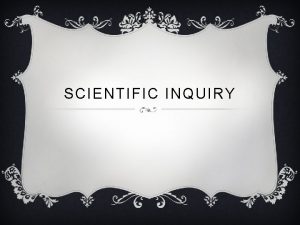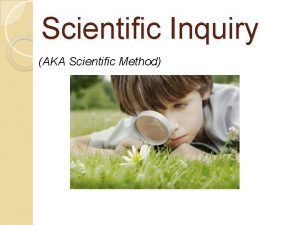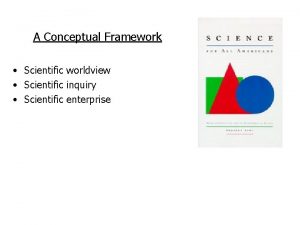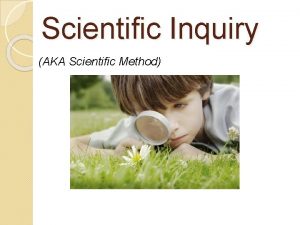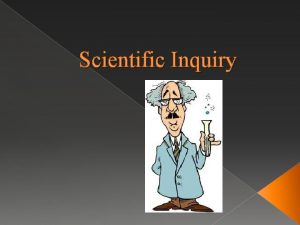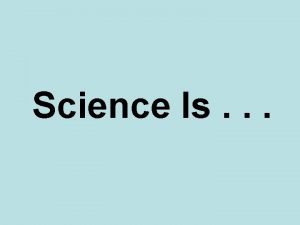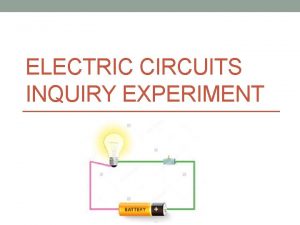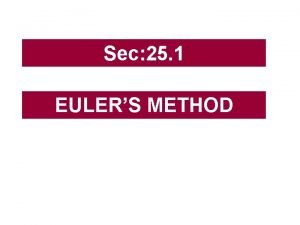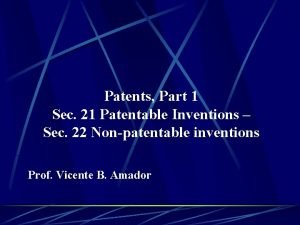Sec 1 2 Scientific Inquiry Scientific Inquiry Scientific




















- Slides: 20

Sec. 1 -2 Scientific Inquiry

Scientific Inquiry Scientific inquiry refers to the diverse ways in which scientists study the natural world and propose explanations based on the evidence they gather.

Posing A Question Any Science Experiment will begin with a good question to be tested. For example: Is Duracell the longest lasting battery? Is that a question we can test? You bet it is! We can conduct an experiment to see if their claim is true.

Hypothesis A hypothesis is an educated guess about how an experiment will turn out. It’s only a guess but it drives the experiment. Is it bad if your hypothesis is incorrect? NO IT’S NOT! It is still a result and valid.

Variables A variable is a factor that can change in an experiment. There are two types of variables, manipulated (independent) and responding (dependent).

Manipulated (Independent) Variables The manipulated variable is the variable the experimenter purposely changes to test the hypothesis. What is the manipulated variable in this experiment? The level of activity

Responding (Dependent) Variable The factor that changes in response to the manipulated variable is called the responding variable. What is the responding variable in this experiment. The number of beats in the heart rate.

Controlling an Experiment It’s important to only test one variable at a time. All other variables in an experiment should be kept exactly the same. In the cricket experiment described in the book what is the responding variable they are trying to test? The number of chirps from the crickets. What is the manipulated variable? The temperature.

Controlling an Experiment So what are some of the other variables that need to be controlled? The container The thermometer The kind of cricket Their food and water supply Everything except: THE TEMPERATURE

The Procedure These are some of the things that need to be included in the experiments procedure. Think of a procedure like a set of instructions for conducting your experiment.

Collecting and Interpreting Data It’s important to organize your data into a table and a graph so it is easier to understand. Data are the facts and figures you measured as you did your experiment.

Collecting and Interpreting Data Making a graph is also a great way to visualize the relationship between 2 variables. (1 manipulated and 1 responding)

Collecting and Interpreting Data In this graph the X axis can be the level of exercise from resting to running. The Y axis is the number heartbeats.

What happens to the number of heartbeats as exercise increases?

Drawing Conclusions After you have completed your experiment it’s time to write a conclusion. Your conclusion should include at least: A statement about your hypothesis, supported or contradicted. Whether you have enough data. Did anything happen that might affect the outcome? Errors and limitations A restated hypothesis

Drawing Conclusions Should you ever change your original hypothesis to support your conclusion? NEVER!!! It is OK if your hypothesis was contradicted; it just means you could repeat the experiment with a new hypothesis. DON’T BE AFRAID TO BE WRONG, IT HAPPENS ALL THE TIME.

Drawing Conclusions

Inquiry Leads To Inquiry Answering one question in science often leads to more questions. For example: Let’s say you do an experiment to determine if Duracell is the longest lasting battery and it turns out it is; are there any other questions that come up? How much longer does Duracell last? Is it worth the extra expense? Why does Duracell last longer?

Inquiry Is An Ongoing Process

Our Unit On Variables We will be starting our unit on variables soon and will cover: Pendulum Buoyancy Airplanes Let’s experiment
 Information gathered during an experiment
Information gathered during an experiment 7 steps of the scientific method
7 steps of the scientific method Define scientific inquiry
Define scientific inquiry Nature of scientific inquiry
Nature of scientific inquiry The 6 steps of the scientific method
The 6 steps of the scientific method What does gg mean
What does gg mean How is a scientific law different from a scientific theory?
How is a scientific law different from a scientific theory? Sec battle drill
Sec battle drill Republic act no 5250
Republic act no 5250 Sec csc cot
Sec csc cot Section 31 of contract act
Section 31 of contract act Tema class c
Tema class c Subject combination sec 3 express
Subject combination sec 3 express Ter-pentilo
Ter-pentilo Nxn sec
Nxn sec Inverse tangent
Inverse tangent Sec tcr
Sec tcr Consideration sec 2d
Consideration sec 2d Sec-butyldiethylamine
Sec-butyldiethylamine Tiny sec
Tiny sec Alkanlarda izomeri
Alkanlarda izomeri

